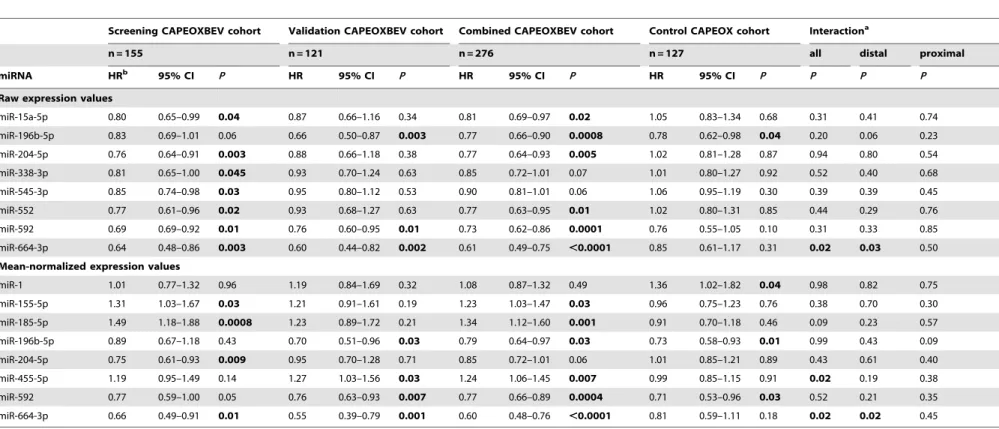Tissue microRNAs as predictors of outcome in patients with metastatic colorectal cancer treated with first line Capecitabine and Oxaliplatin with or without Bevacizumab.
Texto
Imagem




Documentos relacionados
Phase II randomized trial comparing sequential first-line everolimus and second-line sunitinib versus first-line sunitinib and second-line everolimus in patients with metastatic
paclitaxel 1 (MANTA 1) study, 255 metastatic breast cancer patients who received a first-line anthracycline/ paclitaxel combination chemotherapy followed by a pacli- taxel
Objective: To report the clinical progress of patients with Hodgkin’s lymphoma treated with autologous transplantation after failure or relapse of first-line treatment
From the development of this study, it was possible to identify relevant features and aspects to be highlighted at the time of care and health care of patients using
Muitas vezes, o Ensino Médio é encarado apenas como parte do processo para chegar à universida- de e, para quem não tem essa meta, o sentido de cursá-lo se esvazia ainda mais..
Como se deve tomar o banho f Depois de des- pido, é bom ficar em toilette de banho alguns minu- tos sobre a areia da praia ; durante este tempo, o ar ambiente acha-se em contacto
The intravitreal use of infliximab in humans was first reported in 2009, when three selected eyes with active CNV previously and un- successfully treated with bevacizumab
